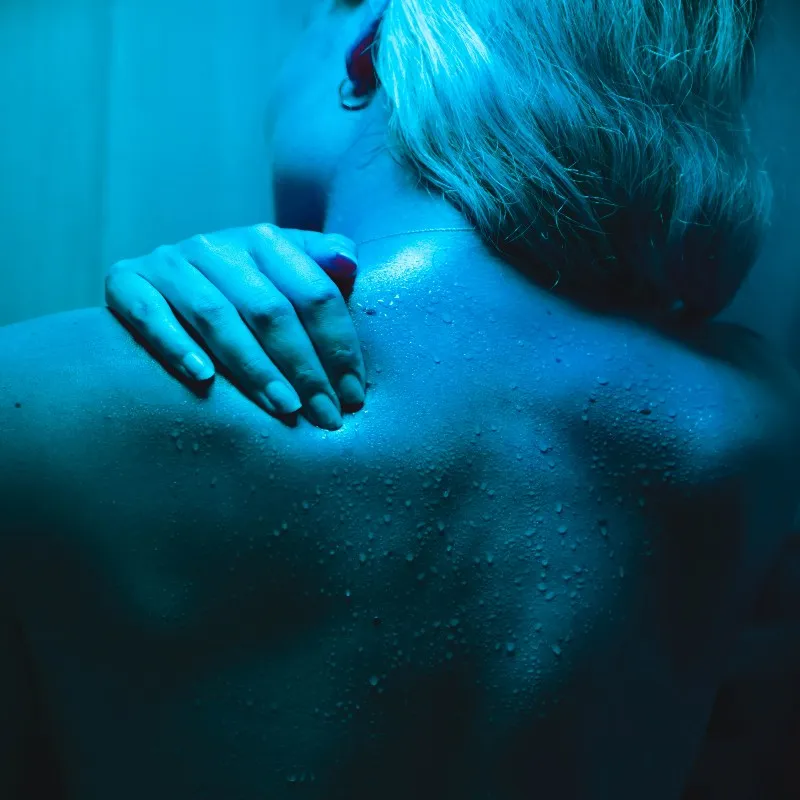Though sweating may seem like a nuisance to many, it is a mechanism by which the brain helps regulate body temperature. Sweating maintains our body’s homeostasis (equilibrium) with relation to stimuli like exercising or high external temperatures that tend to heat up the body. However, when you sweat more than the typical person, you may be suffering from hyperhidrosis with The various causes of excessive sweating.
What is hyperhidrosis?
Hyperhidrosis is a condition characterised by excessive sweating and can occur in just one specific area or the whole body. It usually starts in childhood or adolescence and generally affects the feet, hands, face, head, underarms and groin. Incessant sweating for no apparent cause or reason can lead to feelings of anxiety, nervousness, or emotional distress in the afflicted individual. However, in order to determine the underlying cause for excessive sweating, we first have to look at the classification of hyperhidrosis.
Read more : The latest downfall of not getting enough sleep? It may make you selfish
Following are the classifications
Primary focal hyperhidrosis
The most commonly occurring type of hyperhidrosis is known as Primary focal hyperhidrosis. This is seen in around 30 to 50 percent of people, and more frequently in individuals with a family history of excessive sweating. It is non-life threatening but can be extremely inconvenient, and can impact a person’s confidence and their social and work lives.
Secondary generalised hyperhidrosis
Secondary generalised hyperhidrosis occurs due to certain medical conditions or as a result of side effects caused by the ingestion of certain medications. It generally starts in adulthood and is characterised by excessive sweating across the entire body. This is more serious than primary focal hyperhidrosis as it is caused by an underlying condition such as thyroid problems, diabetes, and heart disease among others.

Symptoms and reasons for excessive sweating
One of the main symptoms of hyperhidrosis is excessive sweating experienced in a symmetrical manner, at least once a week for no clear reason. Clammy palms of the hands and soles of the feet, and frequent sweating which is noticeable through clothing is also commonly reported by the individuals struggling with hyperhidrosis.
The main reason for excessive sweating could be attributed to the fact that sweat glands become overreactive to triggers like stress and heat because of genetic factors. While the cause of primary focal hyperhidrosis isn’t known, scientists believe that it likely has a genetic link because the condition tends to run in families. Secondary generalised hyperhidrosis, on the other hand, is experienced in individuals as a side effect of certain medications which can result in excessive sweating such as antidepressants and insulin.
Treatment options for hyperhidrosis
Secondary hyperhidrosis can be controlled by monitoring the underlying health condition causing sweating.
For primary hyperhidrosis, over-the-counter or prescription strength antiperspirants are the first line of action as they help block sweat production for a few hours.
In more severe cases, the doctors usually prescribe an oral medication (a class of medications called Anticholinergics) which are known to turn down sweat signals.
Medical devices such as Iontophoresis can be employed for hands and feet. This device requires the patient to dip their hands or feet in water, and the device then sends a small electrical current through the water to these body parts to temporarily stop the sweat glands from working.
The other in-office treatments such as miraDry (a device that delivers electromagnetic energy) and laser treatments are also being used these days to treat severe hyperhidrosis. Botox (botulinum toxin) injections, too, are being administered to block the nerves that stimulate sweat glands in the underarm area. According to a study published by the Journal of the American Medical Association, continuous use of Botulinum Toxin Type A for over 16 months has proven effective in the treatment of bilateral primary axillary hyperhidrosis.
A few home remedies that help in managing the condition include the use of over-the-counter antiperspirants on the affected area, bathing regularly to get rid of bacteria, carrying handkerchiefs and wearing socks made from natural fibers in order to let the feet breathe The various causes of excessive sweating.



1 Comment
Pingback: Beauty - hybrid beauty products to your vanity kits